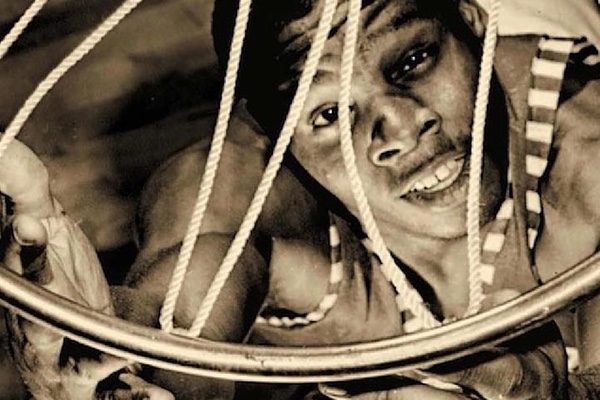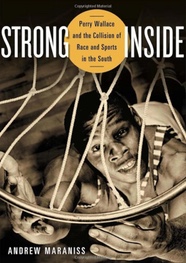The Black Basketball Trailblazer Who Insisted on an Education

He wasn’t going to trade one plantation for another.
That’s how Perry Wallace put it when he told me in an interview for his biography why he ultimately decided not to follow through on his childhood dream of leaving the stifling segregation of the 1960s South when it was time to choose a college. As one of the most highly recruited basketball players in the nation in 1966, Wallace could have gone out west to join John Wooden’s UCLA Bruins, or up north to any number of Big Ten schools. As his basketball skills blossomed during his junior high and high school years in Nashville, Wallace began to see the sport as his ticket out of town. When he was a child, his mother, a cleaning lady at office buildings downtown, would often bring home magazines one doctor or businessman or another had thrown away. She’d flip through the pages with Perry and his siblings and show them photos of a life they did not know. Wallace was mesmerized by this other America, and determined to get there someday.
 But on his recruiting visits to the
basketball factories of the North and West, Wallace began to realize
that if the grass appeared greener away from home, upon closer
inspection it may have been because it was well fertilized with some
of the more unsavory elements of the college game. A straight-arrow,
Wallace was turned off by promises of cash and cars and townhouses.
The wine, women and song recruiting game was lost on him. But most
distressing was what he learned when he talked to the
student-athletes he met on each campus. He’d ask about their
classes, the emphasis on academics within the athletic department,
the ability to socialize with ‘regular’ students. What he heard
and saw was alarming – the athletes, especially the black ones, he
began to believe, were simply being used for their athletic abilities
on many of these campuses, with little regard for their academic and
social lives, even at universities with strong academic reputations.
But on his recruiting visits to the
basketball factories of the North and West, Wallace began to realize
that if the grass appeared greener away from home, upon closer
inspection it may have been because it was well fertilized with some
of the more unsavory elements of the college game. A straight-arrow,
Wallace was turned off by promises of cash and cars and townhouses.
The wine, women and song recruiting game was lost on him. But most
distressing was what he learned when he talked to the
student-athletes he met on each campus. He’d ask about their
classes, the emphasis on academics within the athletic department,
the ability to socialize with ‘regular’ students. What he heard
and saw was alarming – the athletes, especially the black ones, he
began to believe, were simply being used for their athletic abilities
on many of these campuses, with little regard for their academic and
social lives, even at universities with strong academic reputations.
It was just another brand of exploitation he had no interest in, and it was at this point that Wallace began to seriously consider a school that had only begun admitting black undergraduates two years earlier, one that offered no promise of freedom from segregation or escape from Nashville: Vanderbilt University, just a couple of miles from home. What stood out to Wallace were two things. One, that Vanderbilt was a member of the Southeastern Conference, a big-time athletics league but one that was still all white. Not one of the league’s 10 schools, spanning the states of the Confederacy, had integrated its athletic programs. But on his recruiting trips across town, Wallace noticed another thing about the elite academic school: the basketball players appeared to exist as fairly normal students on campus, and they went to class. And it was this ability to study at one of the top engineering programs in the country and play major college basketball that ultimately persuaded Wallace to take the courageous step to integrate SEC hoops, despite the fact – not because of it – that he’d be the first black player in the league.
Nothing about Wallace’s experience at Vanderbilt turned out to be easy. He came to approach road trips to the small college towns of the Deep South with what he deemed “the deepest sense of dread.” Before each trip, he’d imagine the worst thing that could happen, and the vision was always the same: getting shot and killed. But life on campus wasn’t always much better. As he told the Chancellor one time, speaking literally and metaphorically, “Dixie sounds the same in Nashville as it does in Oxford, Mississippi.” Dormitory doors slammed in his face accompanied by cries of ni#@$@ on the floor. An expulsion from a church across the street from campus. Professors who doubted his intellect (despite the fact he had been his high school’s valedictorian). Administrators who encouraged him to just leave the school if he was upset with the racial climate on campus. Black classmates engaged in a constant tug-of-war, shunned by some white students who wanted nothing to do with them and criticized by some black friends back home for even attending a ‘white’ school in the first place. It was enough to nearly drive one insane, one of Wallace’s classmates told me.
How did Wallace survive it? By weaving what he calls a rich tapestry of experiences outside the mainstream. This meant proactively finding supportive friends; talking to figures like Fannie Lou Hamer, Martin Luther King, and Stokely Carmichael when they passed through town; maintaining a relentless focus on his work in the classroom. The approach paid off. After graduating with a double major in electrical engineering and engineering math, Wallace earned his law degree at Columbia University. He worked as an attorney for the U.S. Department of Justice for many years before entering academia, and today he’s a respected law professor at American University in Washington, D.C. A visitor to his office would see no clues to his basketball pioneering past, and most of his students have no idea of their professor’s life story. He wouldn’t have it any other way. His athletic ability has never defined him; not in 1966 and certainly not now. Wallace’s legacy as a pioneer in a basketball sense may now seem quaint in some ways; there’s no shortage of black college athletes. But it’s his example as a student, one who asked to be afforded a real education that would set him up for a successful life beyond basketball, that remains as urgent today as it was a half-century ago: Athletes should demand the full college experience, and athletic programs should be called out when they don’t provide it.
